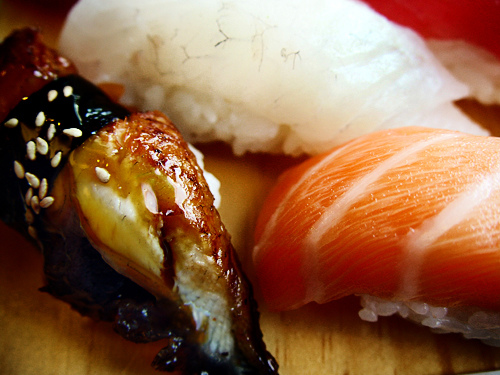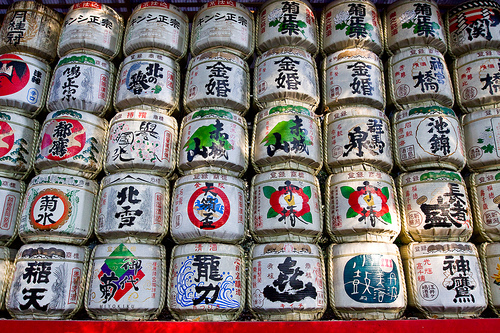Eating and Drinking Customs in Japan

In Japan, people will often go out to restaurants to entertain guests. The reason for this is that Japanese homes are small and compact. If you go out to work with a bunch of colleagues, it is custom to split the bill evenly, no matter how much you eat or drink individually.
Japanese people typically use chopsticks to eat. If you eat out, you can request a fork or knife. These words have been adopted from the English language into Japanese, so if you say “fork” or “knife” to a waiter, they will probably understand you. If you eat at a moderately priced or expensive restaurant, waiters will usually place the oshibori, or hot towel, on your table at the end of your meal. You are meant to wipe your face and hands off with this towel.
Before Japanese people eat their meal, they usually say “itadakimasu” (ee-tah-dah-key-mass). It can translate as something like “I humbly receive,” either as praise for higher powers, or to whoever made the meal. It is traditional for Japanese people to place their hands together in front of them while they say this, but this is not very common to come across. At the end of the meal, Japanese people usually annouce “gochisosama deshita” (go-ch-soh-sah-mah de-shta), a concluding thanks. It can be translated as “it was a feast,” thanking either whoever made the food or higher powers.
Expect people to slurp their noodles while eating. It is considered rude in Western restaurants, but is often recommended in Eastern ones. Instead of blowing on hot noodles and then eating them, you do the cooling down gesture while you actually eat. Many feel as if noodles do not taste as good if you let them cool with the air. It is also normal to lift your noodle or soup bowl to your mouth so food doesn’t spill.
Eating with chopsticks requires proper etiquette. Never leave your chopsticks standing upright, especially not on rice. It symbolizes death, and people will find this disrespectful if you are not at a funeral. When you finish eating, place your chopsticks across from the dish or to the side. Never wave your chopsticks around, nor use them to move dishes around. If you are eating from a common bowl, use the back end of the chop sticks that you have not put in your mouth to dish the food out.

If you are drinking at a bar in Japan, it is custom to let other people pour your drinks. If one person at your table pours your drink, pour theirs back. If you want a refill, you should repour someone else’s drink. “Cheers” in Japanese is “kanpai.”

not accurate enough
I disagree with Taro.It is not comprehensive of course because one cannot cover everything but having lived in Japan for 6 years in three cities I belive it to be a useful overview to a newcomer to Japan
Excellent Article!
If I could write like this I would be well chuffed 😉
The more I read articles of such quality as this (which is rare), the more I think there might be a future for the Web. Keep it up, as it were.
It’s quite well written. However, o-shibori will come before eating.
One more thing: When eating sushi, don’t put the whole sushi into the soy sauce, but turn the sushi sideways or almost upside down and apply a little bit of soy sauce to the fish, not the rice. You may use your hands instead of chopsticks to eat sushi, however, I have not found out if this is appropriate in every situation.
Interesting. I’ve been on a big noodle high lately, I have absolutely no idea why – I just got totally addicted to noodles!! I’ve already tried nearly half of all the noodle recipe here and looking for more still! Crazy huh. I should probably stop soon, I dont think eating noodles every day cant be good for me…